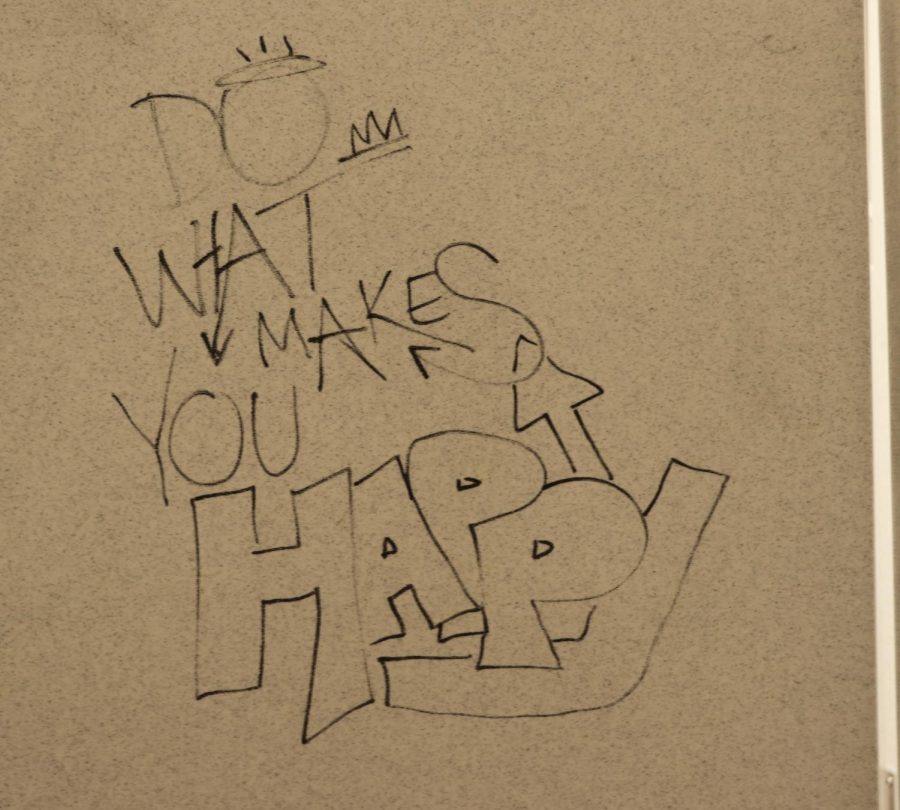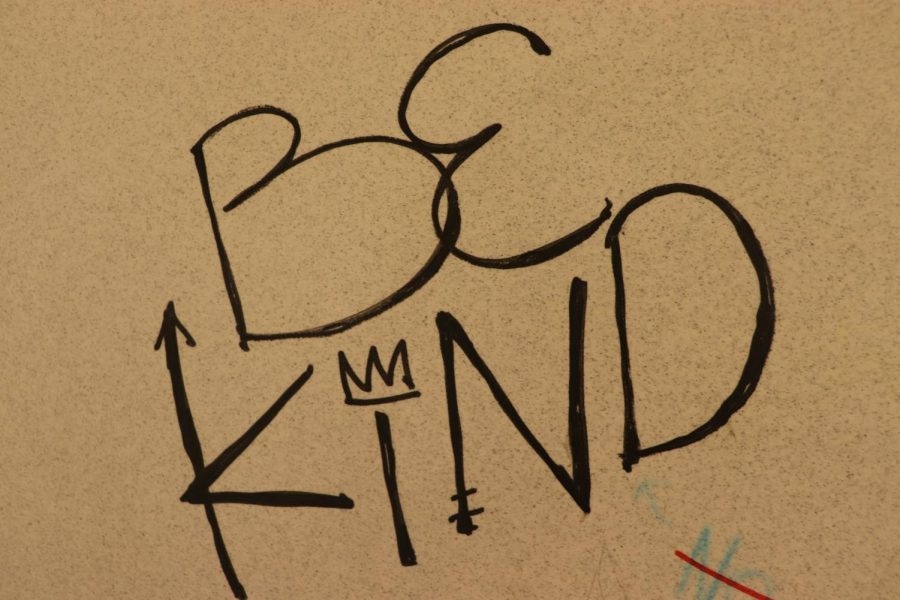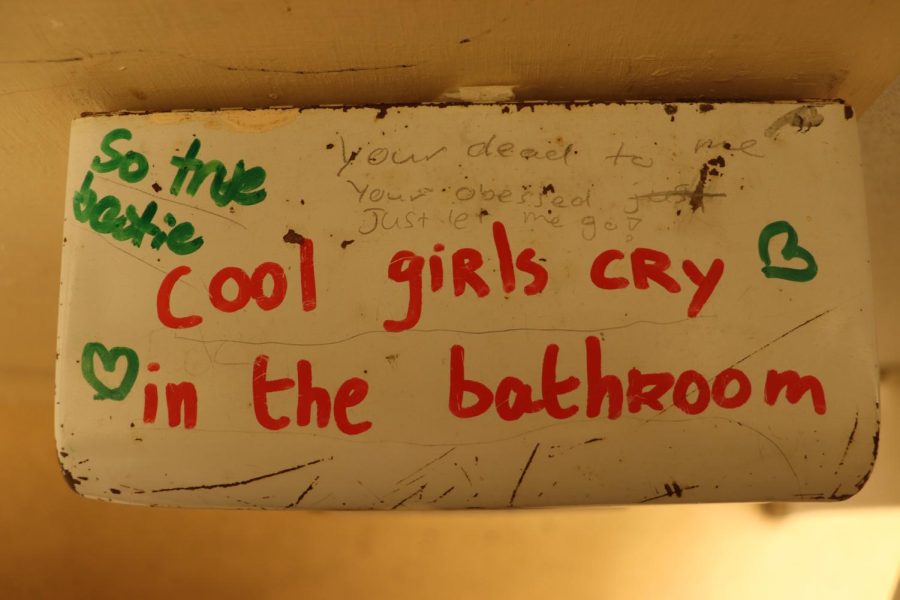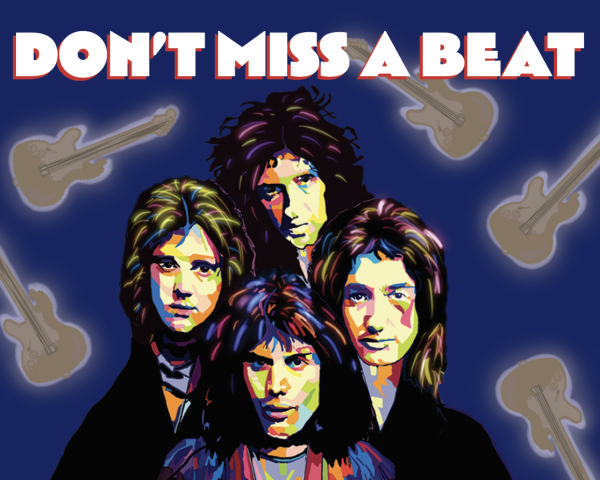Rest-Room for Improvement
The rising debate surrounding the art in Paly bathrooms begs the question, where do we draw the line?
In recent years, anecdotes ranging from sketches to taglines have been drawn inside every Palo Alto High School bathroom. For students and staff, these sketches have become so common that it is almost surreal to see a spotless bathroom. With virtually every bathroom wall covered in permanent marker, it is clear that what began as an outlet for students to occasionally express themselves has snowballed into a campus-wide phenomenon.
The influx of these drawings has brought up a debate among students and administration members over whether or not drawing on the bathroom walls should be deemed as “art” or “vandalism”, and if the chance for expression they provide is worth the negative and dangerous effects they have on Paly staff.

Although for a majority of students, the drawings are seen in a relatively positive light.
“I always look forward to walking to the bathrooms and seeing new drawings from other people,” an anonymous Paly junior said.
“I’ve only seen artistic things like portraits of characters; I have never seen anyone draw or write anything intentionally negative,” an anonymous Paly senior said. “It’s always fun to go there and see all the different things that people wrote on the walls.”
However, concerns have risen regarding the potential that this personal outlet may turn into a free hate speech pass due to its anonymity.
“I think when it’s related to people’s opinions, I don’t really have that much of an issue with it,” junior Nidhi Thummalapalli said. “But if it’s a message that can harm someone else, if it’s hurting someone else’s identity, then it becomes a problem.”
This vulnerability, combined with the vandalistic nature of the situation, leaves the art under strong consideration. Although it’s fun for students to show off their art in the stalls, a completely different side of the story is told by the people who have to take it down: the custodians.
“[The graffiti] takes away from completing the rest of my tasks, and I’m advocating for everybody that’s on this team when I say it’s a headache,” Paly custodian Albert Hidalgo said. “It’s a never ending process.”
The combination of working long, intense hours and being surrounded by harmful graffiti-removing chemicals brings the safety of the workers into question.
“If we were to do everything in one day, we probably won’t come to work the next day because we’ve been so exhausted.” Hidalgo said. “You get this really raunchy scented graffiti remover. This chemical stuff, it’s also harming us. Of course personal protective equipment will still be in effect and we’ll use that all the time, but the problem here is how much does the mask actually help our respiratory system?”
Cleaning up the mass amount of tagging that takes place is an exhausting task, but Paly custodians don’t often get due credit for their intense labor and experience a large lack of respect.
“I’ve had students disrespectfully throw the trash around me, knowing that I’m a custodian, knowing that I’m going to pick it up and clean it. ” Hidalgo said. “It was just very disrespectful.”

With the rising tension and disagreement in the debate over the Paly bathroom anecdotes, Paly admin has taken notice of it and has begun to voice their concerns about the general lack of pride at Paly.
“I have been thinking about what can be done,” said Jerry Berkson, Paly Assistant Principal. “It isn’t happening at other schools. I was going to start taking pictures of stalls at other schools. The problem is, does it then become a “challenge” between admin and students of who can “win” by continuing the destructive behavior? Or do students take it to heart, and adjust their behavior?”
The point made by Berkson about the possible “competition” sheds light on the psychology of the situation.
The broken windows theory was proposed by psychologists James Q. Wilson and George Kelling in 1982. It states that if apparent signs of crime, such as broken windows, are left visible, people will begin to believe the areas in question are unimportant, increasing the level of similar crimes in that area.
In relation to the environment at Paly, this theory could pertain to the notion that anecdotes left within the bathrooms influence other students to leave their mark.
However, Paly’s AP Psychology teacher Christopher Farina disagrees with this idea.
“Something like graffiti may not necessarily be something that would fall within the broken windows theory,” Farina said. “Because if it is something like graffiti in the form of art, that wouldn’t necessarily indicate a lack of caring about that infrastructure; it may actually be the opposite.”
Farina proposes that, much like the government-sanctioned murals in San Francisco, providing students with authorized spaces to create art has the potential to prevent the continuation of unwanted bathroom anecdotes.
“You look at the places where there is student-sponsored art up on the walls and whatnot,” Farina said. “Those things, as far as I can tell, don’t seem to get graffitied over or vandalized. People are excited because it was student-created.”

No matter which way it’s viewed, the art in the bathrooms has an undeniable effect that cannot be ignored.
“I think it starts with the students,” Hidalgo said. “One day you’ll learn, and you’ll learn to empathize with everybody that does things around here.”
Photos courtesy of Sarah Sheaffer
Print Issue
Please click on the three vertical dots on the top right-hand corner, then select “Two page view.”

2022-2023 Staff Writer
2023-2024 Online Editor-In-Chief
I joined C Magazine because I've always loved art, and wanted to incorporate that into the...

2021-2022 - Staff Writer
2022-2023 - Staff Writer
I joined C Mag because I love being given the freedom and resources to write pieces of work that...







